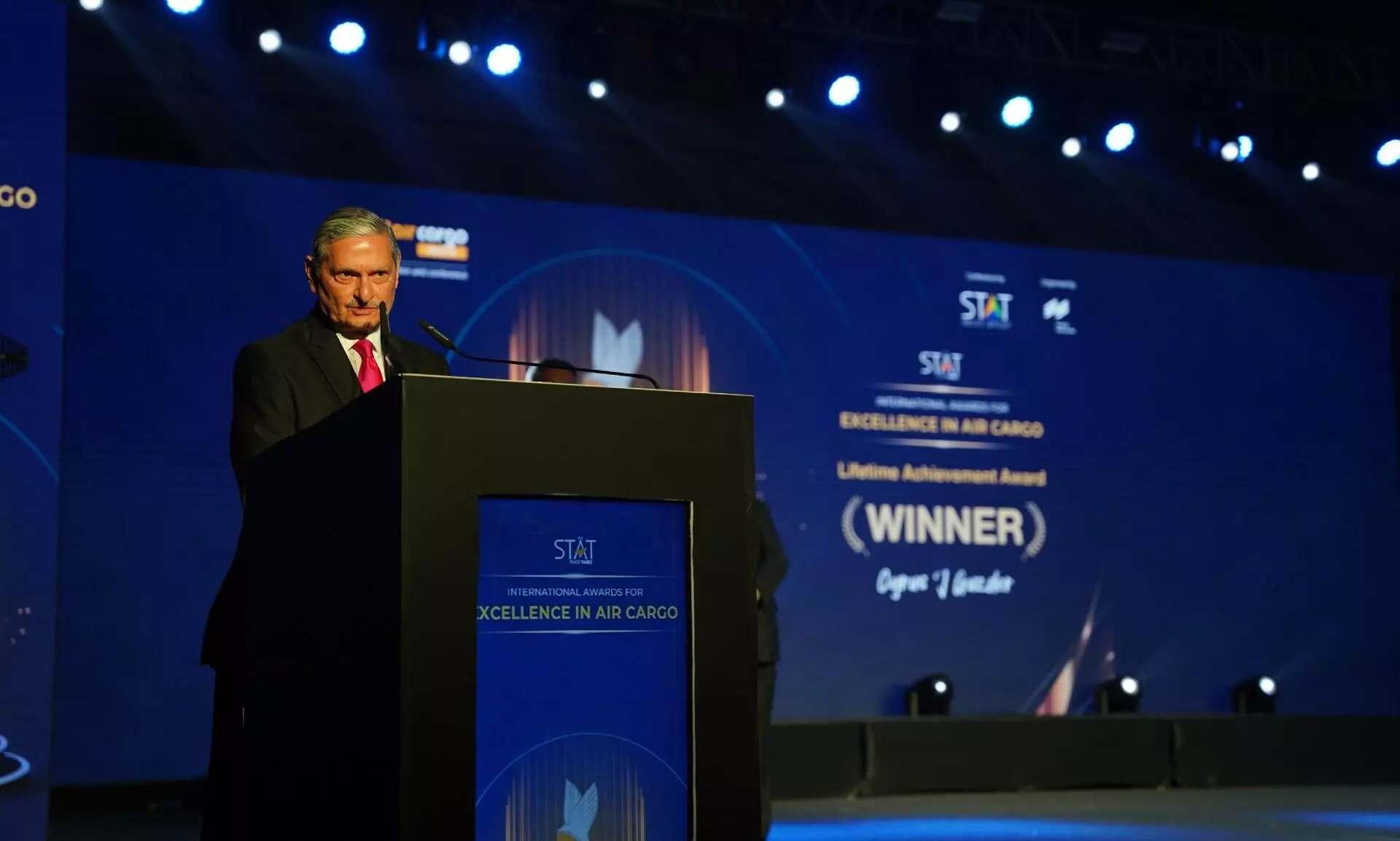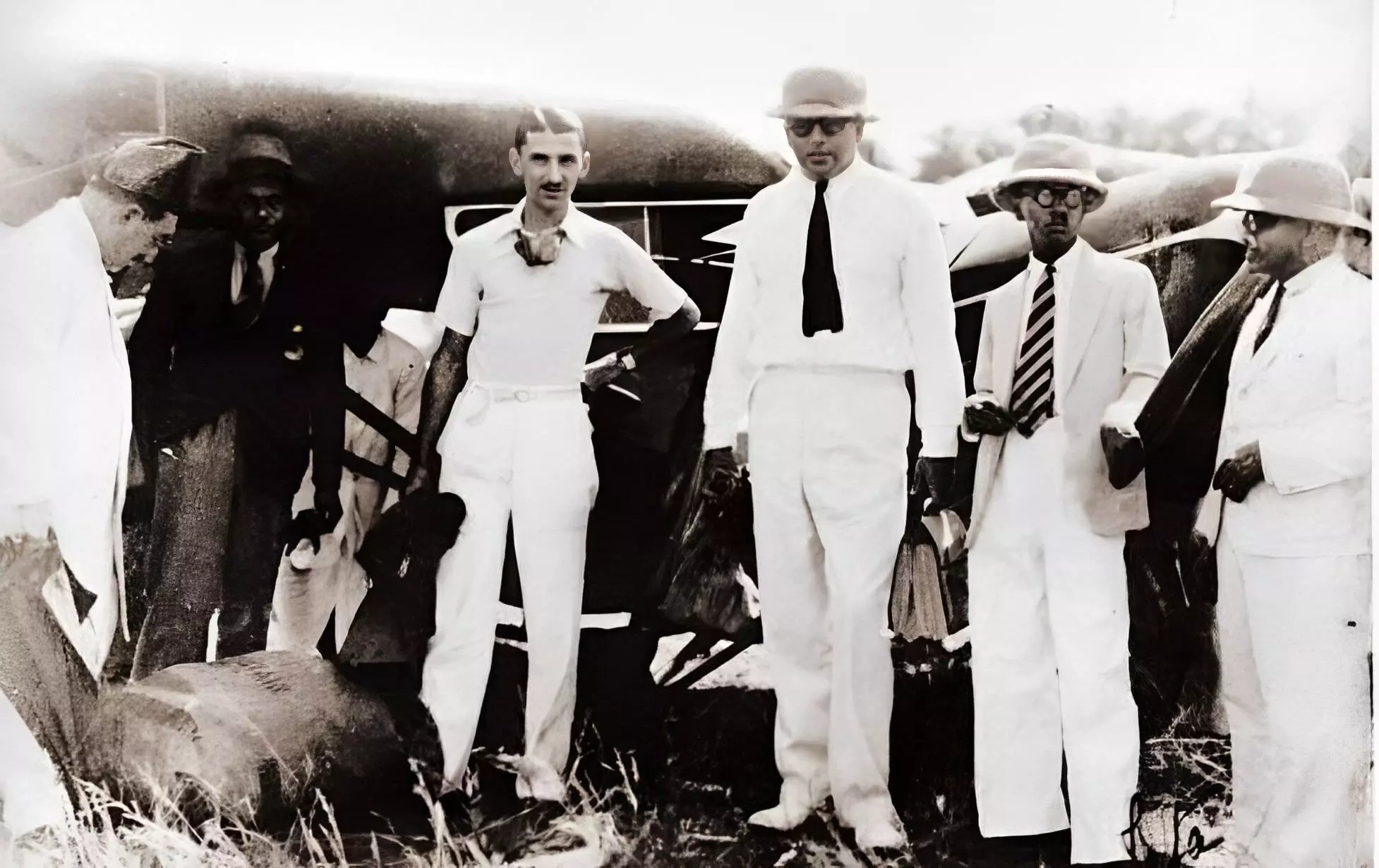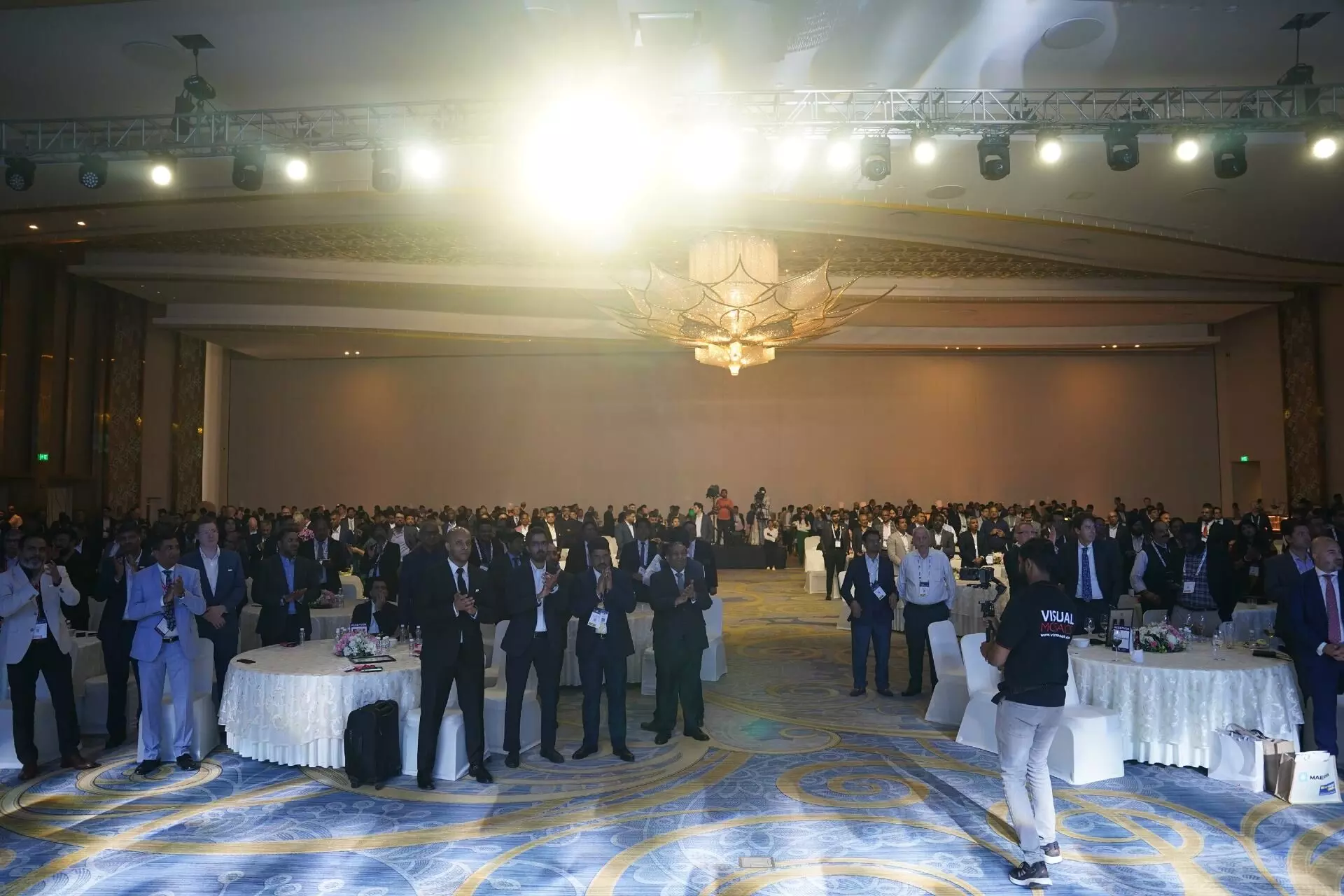
The legend of Indian logistics industry
Here’s the full version of the acceptance speech by Cyrus Guzder, the winner of The STAT Trade Times Lifetime Achievement Award for 2024.

Cyrus Guzder delivering his award acceptance speech
Mr R K Patra [Founder & Editor-in-Chief, STAT Media Group], my former colleagues in freight forwarding, express delivery and logistics, ladies and gentlemen.
I thank The STAT Trade Times and Mr Patra for the great honour they have done me, in bestowing this Lifetime Achievement Award upon me, all the more so, as several years have elapsed since I was active in the fields of air cargo, express and logistics. Meanwhile, my company AFL Private Limited (formerly known as Airfreight Limited) has moved on to yet another avatar - one might say, this time on the other side of the fence – with Quikjet Cargo Airlines Private Limited.
A Lifetime Award covers a career that extends over many years, a whole generation in fact, and the organisers of this conference have suggested that I could touch on those moments in my career where I was privileged to be witness to the evolution of airfreight forwarding and express, from its rudimentary beginnings to the sophisticated, tech-intensive, multi-modal, globally inter-connected business it has become today.
Though AFL is often regarded as a pioneer in the industry, our achievements owe their origin to two of my remarkable predecessors, my grandfather Nusserwanji and my father Jamshed (known to most as Jimmy) Guzder
Those of you, who are familiar with the aviation scene in India, will recall that iconic photograph, taken on 15th October 1932, at Juhu aerodrome, recording the moments after JRD Tata stepped out of his twin-seater De Havilland Puss Moth, having flown the first leg of a historic flight from Karachi to Mumbai, then on to Madras (Chennai).
Nusserwanji can be seen in this picture, in his traditional Parsi dress, eyes focussed on the bags just unloaded from the co-pilots seat, all of 75 kg. This marked the beginning of Tata Airlines’ cargo service to connect the mail of the Indian Postal Service with the Royal Mail, which was carried from Britain to its colonies in the Far East by Imperial Airways, the predecessor of British Airways. All at once, mail from India could reach London in three days, compared with 20 days on the P&O ships.

Nusserwanji had served the House of Tata since the beginning of the century, handling the clearing and forwarding of the 60 tonne turbo-stators from GE Chicago to Bombay Port, and on to the Tata Power stations at Khopoli, which brought electricity for the first time to Bombay in 1906. This business was enlarged by my father Jimmy, so that by Independence in 1947, our company was, in today’s parlance, the logistics partner of Tata’s projects in Western India,
JRD Tata’s dream was now to operate a daily flight from Bombay to London. This became possible with the first Lockheed Constellations acquired in 1946 by Air India (the re-christened Tata Airlines).
The DC-3 Dakotas and Vikings in Tata Airlines’ fleet were now converted to carry freight, each with a payload of two tonnes. This might seem miniscule, but compare that with the total mail and cargo carried in Tata Airlines’ first full year of operations in 1933 – two tonnes in total!
Jimmy was appointed by Mr. Tata to promote and sell passenger and cargo business in his personal capacity on these flights, as Air India’s first Commission Agent. When IATA accreditation began in 1947, Jimmy transferred his licences to his company, which he then called Airfreight Limited, and so our company became the first IATA cargo and passenger sales agency in India.
This was the moment when civil aviation truly began in India (the earlier unique Tata Airlines service had to be aborted when the Second World War commenced). This also marked the formal incorporation of Airfreight Limited, though the company was, in fact, a continuation of over half a century of transport-related services to, from and within India.
The DC-3 Dakotas and Vikings in Tata Airlines’ fleet were now converted to carry freight, each with a payload of two tonnes. This might seem miniscule, but compare that with the total mail and cargo carried in Tata Airlines’ first full year of operations in 1933 – two tonnes in total!
By the time I joined the Company in 1968, Airfreight Limited was performing all manner of services for Air India, including ground-handling and issuing delivery orders; and as more and more airlines commenced flights to India (TWA was the first in 1948) we provided similar services to thirty and more international airlines.
Our presence at Bombay airport was so dominant, that we were frequently called (much to my chagrin) a department of Air India!
In the late ‘60s however, the international cargo scene was not too exciting, even though Air India, having now introduced Boeing 707 aircraft in its fleet (making it the first all-jet airline in the world), had converted its super constellations into freighters to carry commodities, such as spices, sandalwood oil and supari [betel nuts], to the Indian diaspora abroad.
So, now that Airfreight Limited had built its own small cargo terminal at Santacruz airport, I turned my attention to domestic cargo. Every night the terminal would come alive as newspapers from the Times of India press arrived for a quick sort and loading on to the first morning Indian Airlines flights to destinations across India. The night staff also used to book live chicks from poultry farms in Pune, Joy Ice-cream packed in dry ice and other such products which, in those days, were produced centrally and then distributed by air.
I recall a demanding SOP prescribed by the Times of India: issues of Filmfare and Femina magazines would arrive at our office late Saturday night, and have to be booked immediately, on Air India’s flights to London; upon arrival, they had to be swiftly distributed to various cinema houses around London to catch Indians leaving the theatres after watching the Sunday morning Hindi film shows. Even 50 years ago, the Times of India used air freight to precisely reach their target audience.
In the late ‘60s however, the international cargo scene was not too exciting, even though Air India, having now introduced Boeing 707 aircraft in its fleet (making it the first all-jet airline in the world), had converted its super constellations into freighters to carry commodities, such as spices, sandalwood oil and supari [betel nuts], to the Indian diaspora abroad.
Booking international air shipments required considerable experience to construct tariffs using the TACT (the several hundred pages Air Cargo Tariff) and we did make mistakes.
An urgent four-tonne shipment booked to Hanover went missing till it turned up in Riyadh airport! While our booking staff had correctly typed the AWB with Hanover’s 3-letter Code HAJ, a bright spark in ground handling loaded it on to a flight for Saudi Arabia, as "Haj" to him could mean nothing else!
More serious still, was a shipment booked from one of our inland stations destined for Frankfurt via Bombay on LH [Lufthansa]. It was an innocuous looking, transparent liquid, described as Trinitrotoluene. As cargo manifests were communicated to destinations ahead of the aircraft arrival, the pilot was mortified to observe on landing that the airport had been closed to allow only his plane to land, bomb squads surrounded the plane, evacuated passengers and then went in search of the offending shipment: that equally innocuous description on the waybill stored for TNT, strictly prohibited for carriage!
This incident led us to institutionalise rigorous and long-lasting training courses across the Company. I was proud that our head of air cargo ran DGR courses for our entire DHL network and, after retirement, for the industry at large.
In 1977, a tall American gentleman, wearing a cowboy hat arrived at my office to introduce himself from DHL and enquire if we’d like to be their partners for courier services in India. I confess I had neither heard of DHL nor knew what a courier service was! As DHL had only one customer in India, requiring super-fast movement of a bag between Bombay and Singapore, daily, we readily agreed as we were proficient in booking and retrieving cargo at Bombay airport.
And that’s how DHL started in India with AFL providing the proverbial “one man and a dog” to set up the service.
It’s difficult to overstate how DHL transformed AFL into a technology-driven, customer focussed organisation, innovating new processes to meet constantly challenging service standards. Time only permits me to mention two such innovations.
The first was to solve the problem of delays in moving documents through a 2-3 day process in Customs (and closed on Sundays!), when the DHL service standard was to get inward shipments off the plane and on to the kerb-side in 60 minutes. The only procedure that allowed immediate passage through customs was the “Note & Pass” system. Only “dead bodies, live animals, perishables and diplomatic bags” could speed this way through Customs provided the paperwork was completed in 24 hours. Intense lobbying succeeded in getting our courier bags on to this list, under a newly invented nomenclature “Accomplished Documents”. This sounded impressive though no one knew precisely what it meant!
Issues of Filmfare and Femina magazines would arrive at our office late Saturday night, and have to be booked immediately, on Air India’s flights to London; upon arrival, they had to be swiftly distributed to various cinema houses around London to catch Indians leaving the theatres after watching the Sunday morning Hindi film shows.
Another leap forward was to give effect to our dream of delivering documents across the world, to reach “next day”. Unrealistic as this sounded, we achieved this for our bank customers shipping high-value instruments to New York from several cities in India: late afternoon pick-ups, on to the last evening IA flights to Bombay, rapid sorting at the airport (our first preferred sort location was the well-lit car park outside the Centaur Hotel!), loaded on to the midnight departure of BA, an air-side transfer at Heathrow on to Concorde, reach New York same time same day, and a helicopter transfer into Wall Street to catch the first clearing! This level of service, breath-taking in its time, helped our company to gain and retain its dominant position in international express.
Our post-DHL avatar, took us into replicating the DHL formula in domestic express, where we were already offering door to door time definite services by air and road – the latter being a new market offering that set a trend for other small parcel Express carriers. For example, when PAN Cards were being introduced, we delivered 150,000 cards to 5000 locations over three weeks.
After adding the last piece – warehousing – to our 3rd party logistics offering, we were able to integrate a multi-modal service with our customers’ IT systems. This led us into the domain of supply chain management, again a first of its kind service offering in the country.
Lest all of this sound too self-congratulatory, I hasten to clarify that there it was not so much any pioneering genius in our DNA, but ironically, the deplorable state of the country’s infrastructure – physical and procedural – that provided the impetus to our constantly seeking greater efficiencies.
For instance, we were able to launch a successful time-definite door-to-door service by road, (2 days to BLR, 3 days to DEL) because this longer transit time was still more consistent and reliable than the erratic air service of Indian Airlines which, in the 1980s, suffered badly from industrial unrest.
The telecom network connecting Indian cities was also so rudimentary in the 1980s, that we were compelled to set up our own captive high-speed, leased line network connecting 17 cities, as the only way to accelerate delivery information across the system. In its time, this was one of the country’s largest private networks and also one of the first private VPNs.
Equally, the dreadful state of north Indian highways compelled our Heavy Projects Division to invest in a fleet of multi-axle Goldhoffer trailers and shallow depth barges, to transport packages weighing upto 400 tonne and over 50 m. long, from Calcutta, up the river Ganga, and RoRo to plants in Central Uttar Pradesh.

In much the same way, we were obliged to develop in-house, our own Warehouse Management System, to transform the godowns of those days into Distribution Warehouses that met the stringent requirements of hi-tech customers like HP.
You may wonder why I chose to look so far back at our antecedents. I do so, because it seems hard to imagine that so much of what we take for granted today – the incredibly efficient and extensive delivery systems across India and, especially, the last mile; on-line booking of shipments; shipment tracking; instant delivery information; 24-hour call centres and booking offices – none of this existed through the ‘80s when AFL and DHL managed to put all those pieces of the express and logistics jigsaw together, and set the stage for the transformation of logistics and set new standards for technology-backed delivery and transport in India.
In concluding, while once again conveying my gratitude to The STAT Trade Times for this Award, I would like to acknowledge that the achievement that is recognised, such as it is, flows from the exceptional relations my company has enjoyed with my foreign business partners DHL, DACHSER, Carlson Wagonlit and ASL; and the outstanding management team that ran AFL’s operations to such high standards across India for over half a century.

